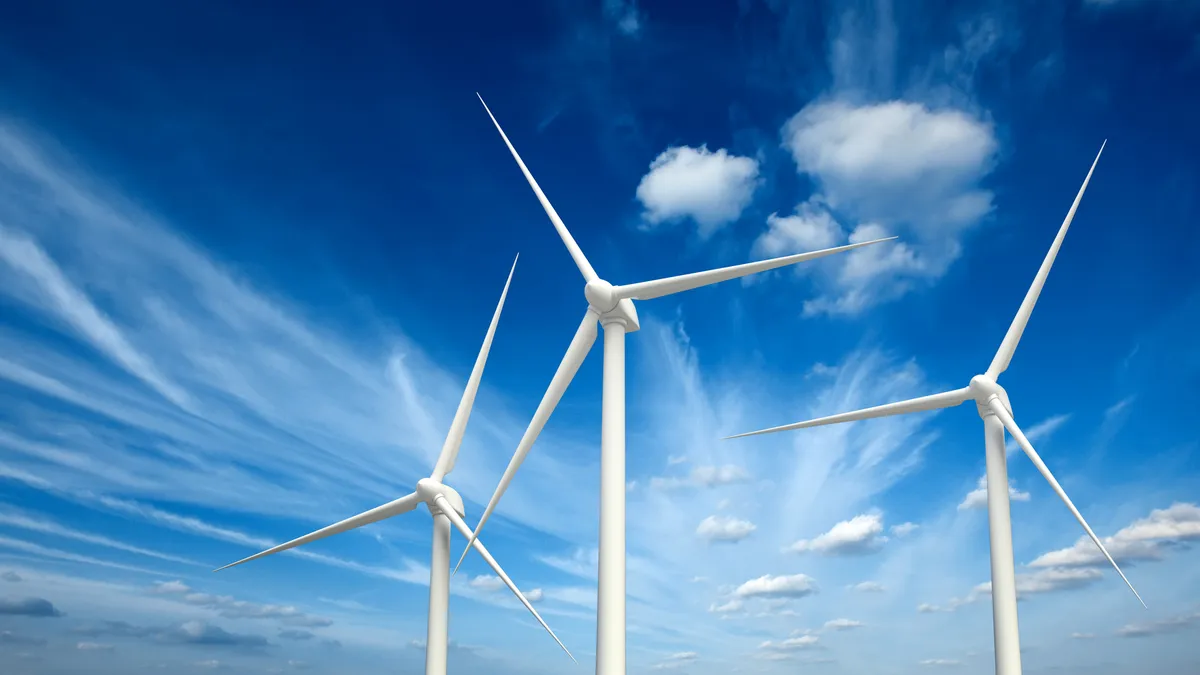Dive Brief:
- To meet increasingly ambitious federal and state decarbonization goals, the U.S. power sector requires a major overhaul of its electric grid, industry experts noted in a discussion Axios held last week.
- Tens of billions of dollars are needed to deal with a massive inflow of energy from renewable sources, as well as to harden the grid against potential cyberattacks and natural disasters.
- Sen. Martin Heinrich, D-N.M., said he is pushing to include tax credits for grid and transmission line work in any infrastructure package Congress passes.
Dive Insight:
As power companies and startups alike roll out new solar and wind projects, the U.S. needs new investment in its electric grid to keep up with the changing sector, said participants in the "Energy Forward: Reinvent the Grid" discussion.
Over the last century, industry and government's focus when it came to the electric grid was ensuring stability, said Colin Parris, senior vice president and chief technology officer at General Electric's GE Digital.
But renewable sources like wind and solar are by their very nature "dynamic," he said, noting the flow depends, to some extent, on the weather:
"The sun doesn't always shine and the wind doesn't always blow," Parris said.
The challenge is adding renewable sources while maintaining stability. That means building new lines that connect to renewable sources, some of which — like offshore wind farms — may be in remote locations. It also means developing AI capabilities "to forecast problems" and "real-time capabilities to control the flow of electricity," Parris said.
The transition, Parris said, is akin to going from a one-lane road to a "multilane highway."
Karen Wayland, CEO of the GridWise Alliance, which consists of major utilities as well as companies including IBM and GE, offered a similar assessment.
"The grid has to be able to accommodate all of that new load — you have to make sure you know where the load needs [are], and you also have to have a much more flexible grid that can responds to varying loads," she said.
To that end, Wayland, who was an aide to former Senate Majority Leader Harry Reid and a former U.S. Energy Department official, said she hopes to see at least $50 billion to address grid issues in the final infrastructure package.
President Joe Biden's $1.7 trillion infrastructure proposal calls for spending $100 billion on modernizing the nation's electric grid.
Heinrich, who sits on the Senate Committee on Energy and Natural Resources, said his "biggest priority right now" is working to get an investment tax credit to help spur power companies to undertake grid overhaul projects.
"There is such a long lead time … and such large price tags, any incentive and certainty you can put into the process really does help with the outcome," he said.
Heinrich's bill is a seen a potential companion piece to Biden's $100 billion proposal, with the focus on "regionally significant" transmission lines, according to S&P Market Intelligence.
Rob Gramlich, executive director of Americans for a Clean Energy Grid, told S&P that the New Mexico senator's bill could fill a gap in the marketplace, as with nearly two dozen interregional transmission line projects have stalled around the country because of a lack of financing.
Heinrich said he is also hopeful that overhauling the transmission grid is an issue that will draw bipartisan support.
While the two parties might have different approaches to dealing with the problem, both agree that modernizing the grid is important.
"I don't think this is one of those hot-button issues that falls out," he said.













